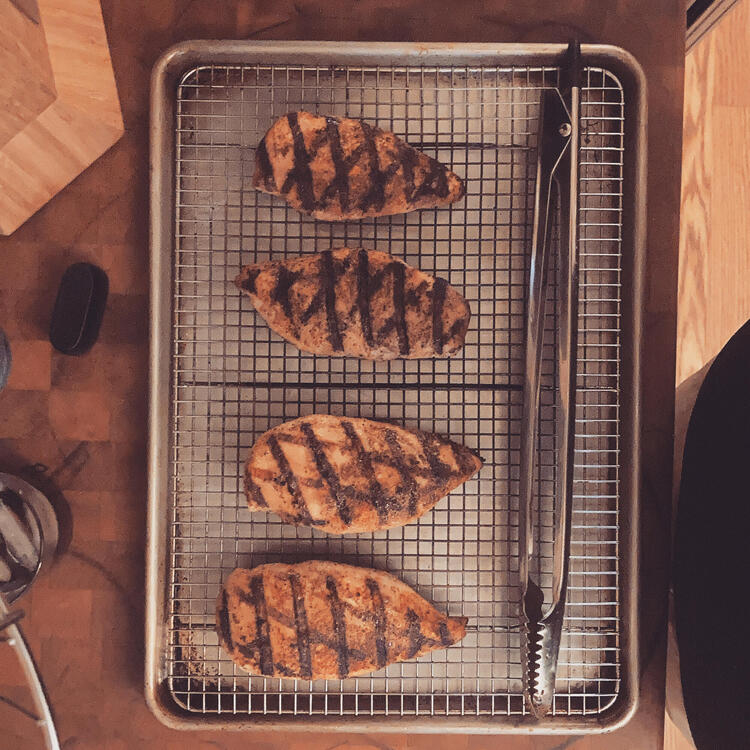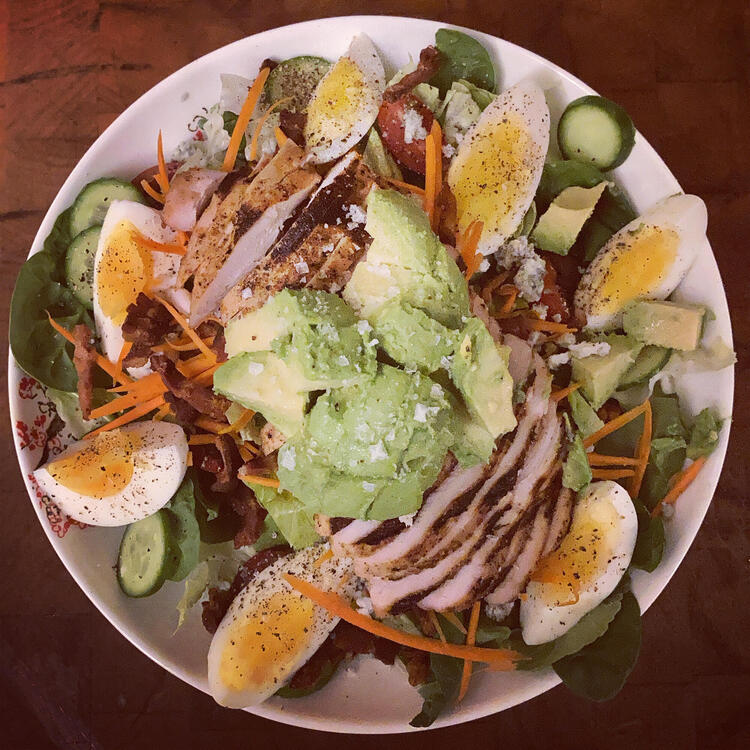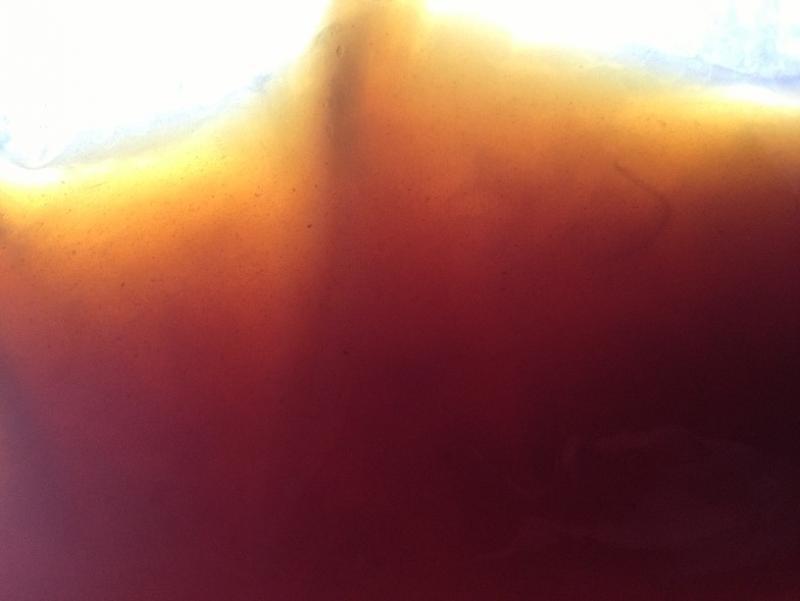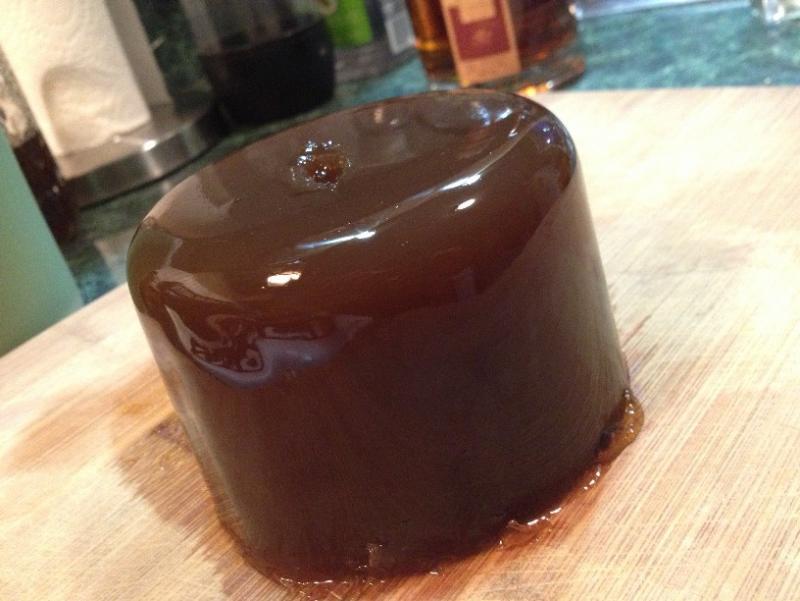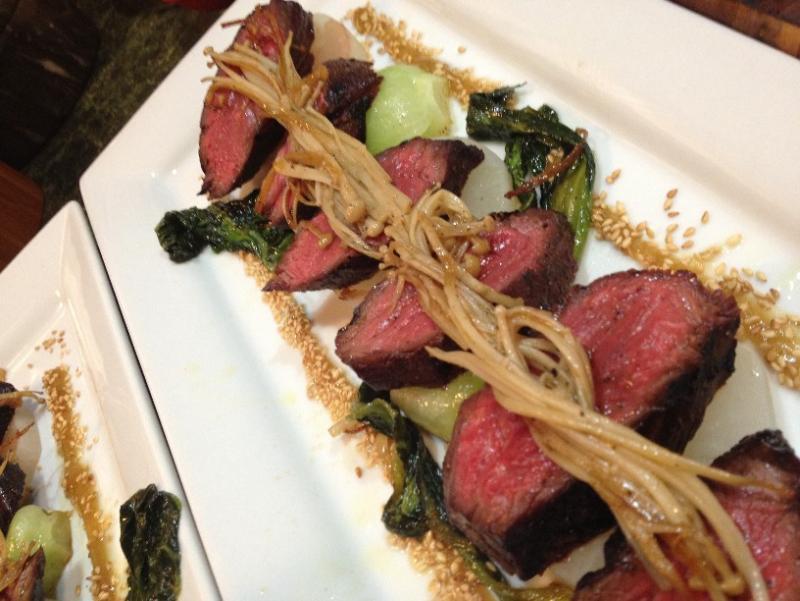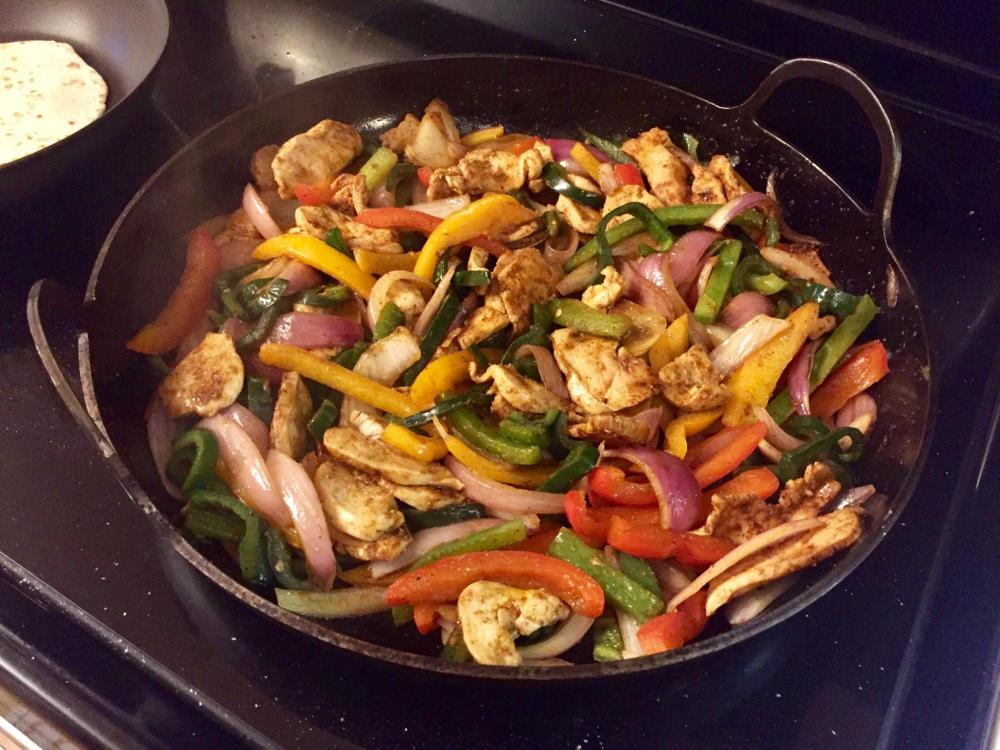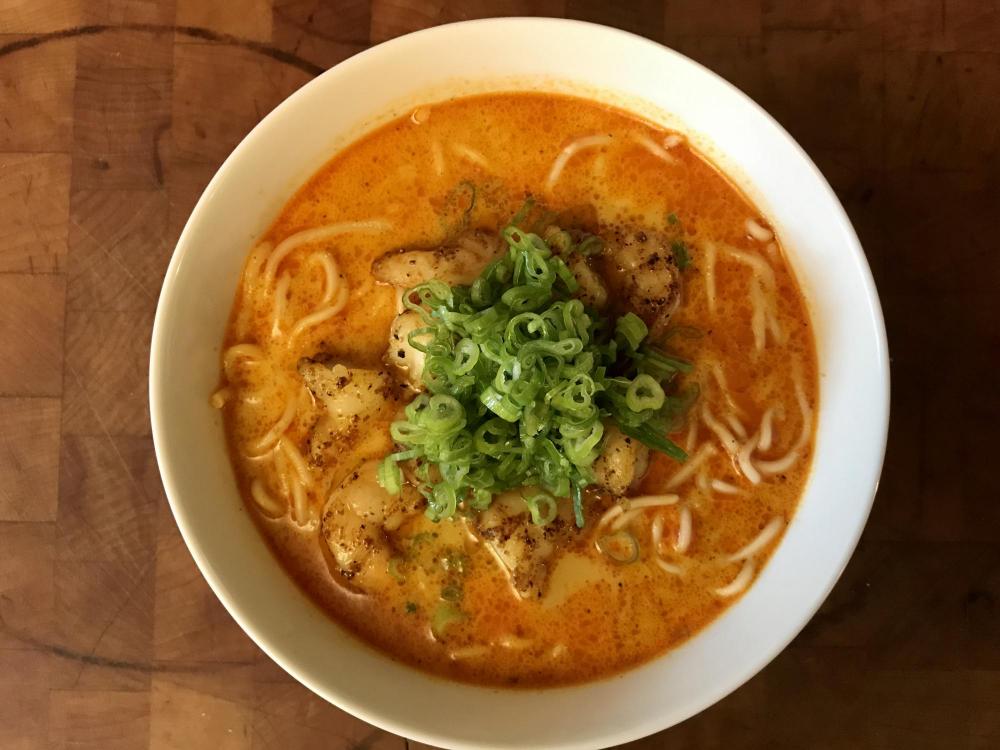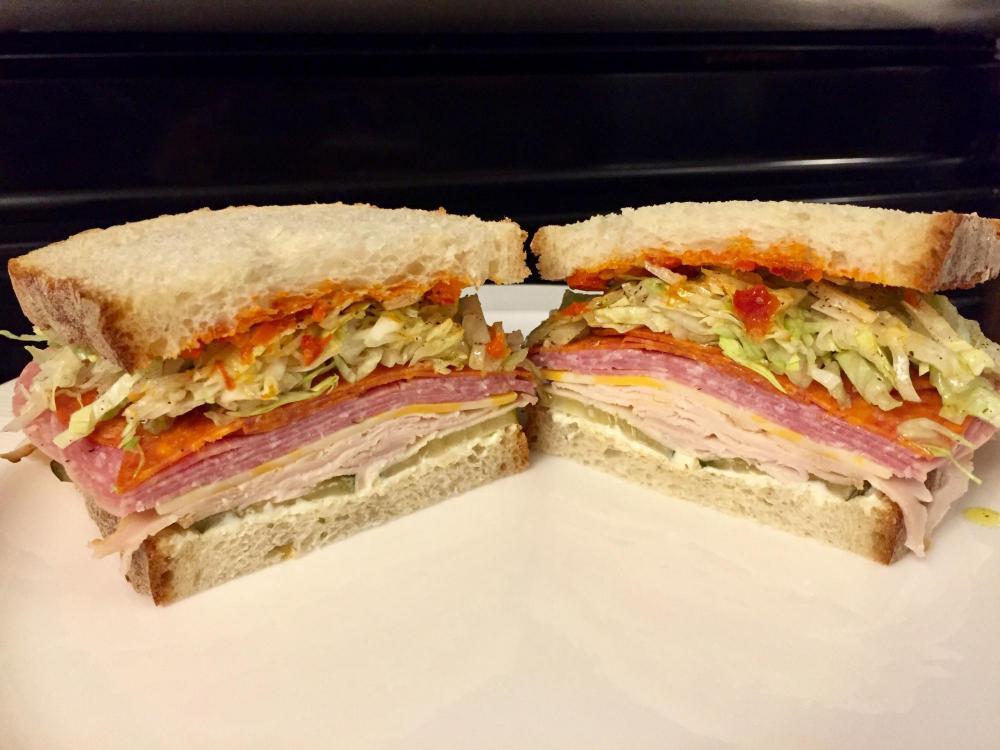-
Posts
1,807 -
Joined
-
Last visited
Content Type
Profiles
Forums
Store
Help Articles
Everything posted by btbyrd
-
Oh good... this thread again. Rotut's point is that there is no difference between food cooked in stainless (or otherwise "sticky") and non-stick pans when cooking protein and then making a pan sauce. "F + M = constant" so "there is no difference on your plate." I have been unable to follow the logic of this; if there is less fond in a pan because more Maillard products are sticking to the meat, the pan sauce is clearly going to be inferior in flavor to one produced in a pan that has more fond. Even if the total amount of "fond + maillard" is the same between stick and nonstick, this doesn't mean that the results will be indistinguishable. Nonstick pans produce weaker sauces but can create more Maillard-y meat; stainless produces stronger sauce from Millard bits that are no longer attached to the surface of the meat. These are real differences "sur la plate" even if F + M = constant. Nonstick pans also present technical challenges to making a pan sauce, as Paul Raphael has pointed out. It is not easy to remove cooking oil from a nonstick pan without discarding the "fond," and the "fond" can become bound up with the oil since it's not stuck to the bottom of the pan. Even with all that being granted, I have found that cooking certain proteins in nonstick pans can produce tastier meat, as it gets covered with its own "fond" and browns more deeply. I wouldn't want to make a pan sauce in there afterwards though.
-

Looking for Robatayaki ( Robata ) grill rcommendations and tips
btbyrd replied to a topic in Kitchen Consumer
Yakitori is the type of cuisine best suited toward konro cooking, and Matt Abergel's "Chicken and Charcoal" is the best English language reference on the topic. It's professional in that it doesn't dumb down its contents for a home cook audience, but the ingredients and techniques are all very accessible. It does focus quite a bit on yakitori butchery, but breaking down birds for skewers is a big part of what konro cooking is about -- at least in my opinion. There are other books that target home cooks (such as Tadashi Ono's "The Japanese Grill" and Silla Bjerrum's "Robata") but they are quite elementary if you're already kinda-sorta familiar with Japanese cooking. If you did want to pick one of those up though, Robata is the superior book and is probably the most accessible reference on Japanese charcoal grilling. But at its heart, konro / robata cooking is somewhat basic : high quality ingredients prepared simply and cooked over quality charcoal. It can also be a nice finishing step for sous vide protein or blanched vegetables. None of this is to suggest that there's no technique or finesse involved in cooking this way -- far from it. But it's mostly the sort of thing you learn from experience rather than reading about. ChefSteps also did a turkey yakitori class recently for Thanksgiving. Again, a lot of it focused on how to break down the bird for skewers... but that's a big draw of cooking with konros. -

Looking for Robatayaki ( Robata ) grill rcommendations and tips
btbyrd replied to a topic in Kitchen Consumer
Aramaru Vietnamese binchotan from Korin. It's not "as good" as the Japanese white binchotan, but it's sooo much cheaper. I can't see myself paying $300+ for a box of charcoal. -
Isn’t that what nitrites are for? I thought we were just trying to mellow it.
-
I'd just blanch the garlic a time or two.
-

Looking for Robatayaki ( Robata ) grill rcommendations and tips
btbyrd replied to a topic in Kitchen Consumer
I have one of the medium konros from Korin. I never use it inside for two reasons. The first is ventilation, which may not be an issue for some. In addition to the carbon monoxide risk, certain foods (like fatty steak or chicken with skin) produce a significant amount of smoke when cooking. The other reason is that binchotan can pop and spark, especially when you're lighting it or it's burning really hot. I worry about little bits popping off and scarring the floor (or worse). This isn't much of an issue in a commercial kitchen, but in a home setting it presents a problem. One thing to note about konros is that they function differently from most other grills, in large part because the heat source is so close to the surface of the food being grilled. This makes it ideal for relatively thin pieces of food and less good for, say, a thick steak (that hasn't been cooked sous vide first). Fatty/drippy foods pose grease-fire flare-up problems; I'd never attempt to grill a hamburger on one, for example. Because of the thick ceramic construction, most of the heat goes straight up instead of radiating out the sides, so it is efficient. Getting used to grilling this way takes some time and experimentation, but it's a fun way to cook. It does lend itself toward particular foods, so I wouldn't say that a konro is a great general purpose grill. If you do decide to get one, pick up a few extra grilling "nets" along with a fan to blow air at the charcoal. I thought the fan was just a superfluous and somewhat precious accessory until I used it; it's extremely useful when you need to crank up the heat. I also take mine camping to work as a campfire bellows. Aramaru charcoal from Korin strikes the right balance between price and performance. It's made in Vietnam from hard wood, and is not extruded like sumi charcoal or Thaan. It burns hotter, longer, and cleaner than those. As mentioned, it can spark during lighting, so don't hover your face over the chimney. -
-
We use a very similar looking pattern from a different brand.
-
I have the 7" version, which is pretty beastly at around 14 pounds (with the pestle). If my bathroom scale is to be trusted, that is... my kitchen one couldn't handle the mass. The 9" one they sell must be insane. For a while, these seemed to be the mortar and pestles that got all the press. After Grant Achatz gave a positive review, I was sold. I don't use it as much as I should, but it does look great on the counter. I mostly use it to bash up anchovies and garlic for caesar dressing or to bash up some peanuts, but I will make a pesto every once in a blue moon (though I mostly use the food processor for that). If I lived somewhere with better access to ingredients, I'd make my own curry pastes with some frequency. I actually got the M&P just after the Next: Thailand and Pok Pok cookbooks came out and I was hoping to put some Thai dishes in my recipe rotation, but that never happened. Maybe someday I'll live somewhere you don't have to mail order galangal, cilantro root, or kaffir lime leaves.
-
I use the juicer attachment for KitchenAid stand mixers. It's relatively inexpensive, does a good job, and is small and easy to store (if you don't count the mixer!). The only issue I have with it is that the strainer basket clogs somewhat quickly. If I'm doing a large batch, I just remove it and strain the juice separately. I do that anyway if I'm going for pulp-free juice, so it's not a big imposition. It has 4.4/5 stars with almost 2000 reviews; other people seem to like it too.
-
I keep Minor's chicken and beef bases on hand at all times, along with a chicken and beef stock/glace from More Than Gourmet. Powders and cubes can't compare.
-
I got the idea from Heston Blumenthal, who uses the onion water to make a fluid gel. That was my original exposure to the SV caramelized onion technique. His recipe includes no salt and goes for 96hours at 85C. I think the addition of salt improves yield, but that may just be me imagining things. You'll definitely want to seal up your cooking vessel, as a lot of water will get lost due to evaporation at that time/temp. The first time I made the recipe, I was struck by how much it made my kitchen smell like French onion soup... and it was only a short leap to try making it with SV onion water. I use yellow and white onions as well as shallots. Like Mokapot mentions above, sweet onions are best avoided because they're too, well, sweet. Haven't tried it with garlic water, but I keep meaning to. I've only made it twice. It's a fun idea and worth trying. I have no pictures of the soup, but will document the next time I make it (probably not until fall or winter). I do have some documentation from the fluid-gel dish though. Here's the onion water in the bag: Set with agar. And on the plate (on both sides covered with toasted sesame seeds) Hanger steak with bok choy, dashi braised daikon, and enoki mushrooms. Literally everything was cooked SV. I was going through a phase, to put things mildly.
-
I usually make beef stock in a PC but cook the onion components of the soup conventionally (on the stovetop or in the oven). Pressure cooked onions lose a lot of their potency.
-
100% of the restaurant onion soup I've had tasted like it used Minor's beef base as a major flavor component. So much so that when I first tasted Minor's base, I remarked "Oh! So that's what they've been using." I tend to use homemade beef stock, heavy with gelatin, as the backbone of my onion soup. Sometimes I pump up the flavor by adding Minors and/or some More Than Gourmet beef glace. The most elaborate way I've ever made the soup was to cook several varieties of sliced onion sous vide with 1% salt for 100 hours. The result is a deeply caramelized onion water that you can dilute down with whatever liquid suits your fancy. I discard the onions themselves, as they're spent after that length of cooking. Gotta cook more onions for the soup itself. Sure, it's sort of over-the-top, but the depth and clarity of the onion flavor is unlike any other soup I've tasted.
-
A pan of this size is too large for the element. Induction cookware heats the pan itself, and only the part of the pan that is directly above the induction element. Even with thick stainless cookware (like All Clad D7), the sections of the pan that aren't above the burner are significantly cooler than the center of the pan. If one tries to boil water, for instance, with an 1800W standard induction element, one can see that only the center of the pot or pan bottom actually boils. Heating a GN pan of that size will produce a hot spot in the center and a cold zone around the outside, especially in a pan that's solid stainless steel (which does not heat very evenly).
-
You don't have to defrost frozen vacuum sealed product before cooking it SV; cooking from frozen is perfectly fine, if not preferable. Rapidly thawing in the SV bath reduces moisture loss during thawing (compared to thawing slowly in the fridge or in cold water). I doubt that seasoning frozen meat will make a difference in the ultimate texture versus seasoning and then freezing. The meat is still going to be in contact with the salt for an extended period during both storage and cooking. You might not mind the salted texture though. I don't have a huge bias against it in something like short ribs (though I don't care for the texture in tender steaks). Cook-chill-store SV is not really a workflow that produces "leftovers." It's more like creating mise in place for future meals. I have no idea why you'd have a preference against reheating chilled and stored SV product, but if you want to make your short rib cooking workflow unnecessarily labor intensive and time-sucky, knock yourself out. I, for one, find having a batch of 72 hour short ribs stashed in the freezer convenient and delicious. Dinner's ready in an hour!
-
It's not clear how you're planning on cooking them, but if you're going to SV them I find that it's most convenient to cook them SV first -- and in a large batch -- and then freeze them so I don't have to wait 72/48 hours for them to cook when I want to eat them. In any event, they store fine vacuum sealed in the freezer. My only concern would be any salt in the dry rub, which might end up giving a more firm cured texture to the ribs. That may or may not be a problem, depending on your preferences.
-
-
Bingo. Soda Streams are designed to carbonate bottles that are filled to the fill line. Underfilled bottles are liable to overcarbonate.
-
-
😄 It's mayo, and Calabrian chilis up top. There's vinegar and olive oil on the lettuce.



